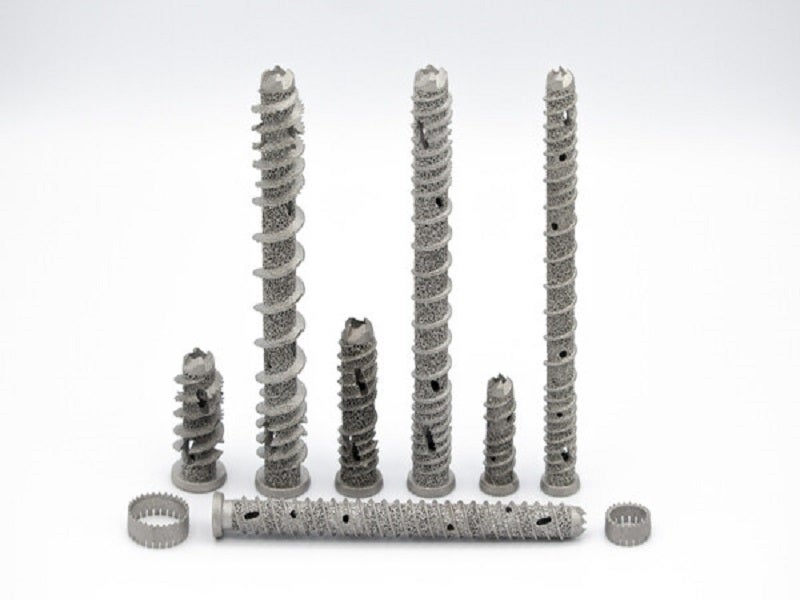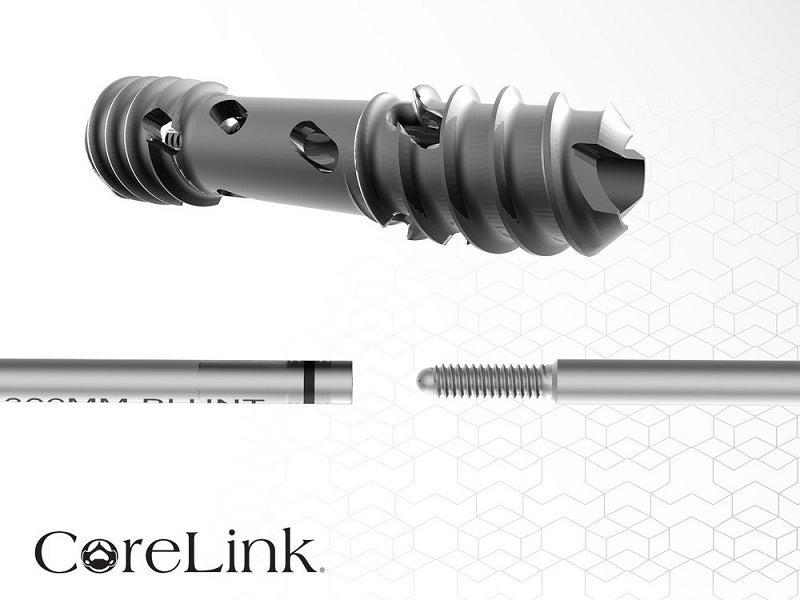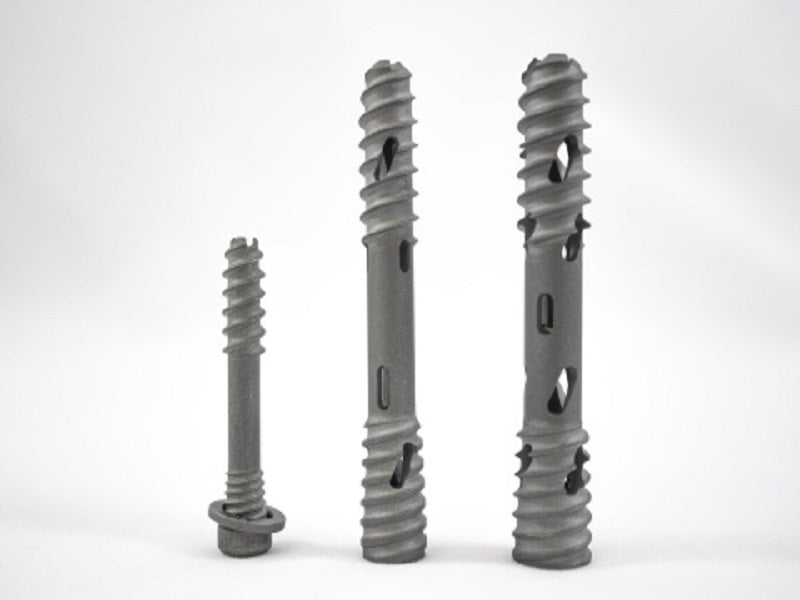The Siber® Ti Sacroiliac (SI) Joint Fusion System is a family of fully porous, nano-surfaced, 3D-printed implants developed by CoreLink, a medical device company based in the US, to support surgeons in SI joint fusion procedures by accurately fitting into a patient’s anatomy and improving points of fixation with diverse options in length and diameter.
The SI system received 510(k) clearance from the US Food and Drug Administration for use on humans in March 2023.
Siber Ti Fusion System Design Details
The Siber Ti SI fusion system contains screws and washers, which are engineered using the company’s patented Mimetic Metal® 3-D printed technology to mimic natural bone with directional lattice framework and inner trabecular pores. The system is designed to offer versatility to surgeons for use in posterior, oblique, and lateral implantation approaches.
The screws measure 9.5mm, 11.5mm, and 14.5mm in diameter and 30mm to 110mm in length with 5mm increments. They have dual-lead, helical and self-harvesting threads with significantly varied thread pitch to offer true joint compression, optimising the opportunity for successful bone fusion.
The 3D-printed washers measuring 5mm in diameter complement the screws. It is currently the only 3D-printed washer system available in the market. An optional washer is also available for a 7mm implant.
Siber Ti Fusion System Features
The Siber Ti is a versatile and comprehensive fusion system available in compressible and non-compressible styles, which allows them to be used in trauma and non-trauma related cases. The double-lead thread of the screws allows easy placement, while the depth of the threads offers tactile touch and a powerful grip.
The self-drilling tip offers an easier grip on the cortical bone.
Mimetic Metal Technology Details
Mimetic Metal is laser-printed by using a micro-fine Titanium powder. The 3D-printed porous interbody technology allows the system to mimic the key characteristics of a natural bone to provide an optimised structure and condition to heal with utmost precision.
It creates a micro-roughened, completely open-pore, directional lattice architecture, mimicking cancellous trabeculae, with hydrophilic wicking capabilities to allow blood flow and bone growth through the implant. It offers textures at micro, macro, and nano levels.
The porous structure enhances the hydro-wicking forces of the system by adding on to the natural hydrophilic nature of its titanium alloy. It reduces the overall implant density, improving the imaging characteristics. The design balances the overall stiffness of the device. Mimetic Metal eliminates the risk of delamination by providing a single-piece construction.
Mimetic Metal offers hydrophilicity, strength, post-operative imaging, directional lattice for load sharing and wicking features to the Siber Ti system. The technology intends to address the clinical limitations of other commonly used interbody device materials, such as metals, polymers and ceramics, while improving the osteoconductive ability of the device, enabling bone growth.
Clinical Studies on Mimetic Metal
The Mimetic Metal titanium 3D-printed technology was evaluated in in-vitro and in-vivo clinical studies.
The in-vitro study examined the osteoblast activity on Mimetic Metal porous titanium material compared to other interbody device materials, while the structural and functional connectivity between the bone and the implant with Mimetic Metal was compared to machined and roughened titanium in the in-vivo study.
The in-vitro study demonstrated a significant increase in osteoblastic activity of Mimetic Metal compared to machined solid titanium, polyetheretherketone (PEEK) and bioactive hydroxyapatite PEEK. In-vivo studies revealed in-growth and on-growth of bone-like structures in cortical and cancellous bone.
The study concluded that Mimetic Metal’s 3D structure supports bone in-growth and enhances implant fixation during bone healing.









